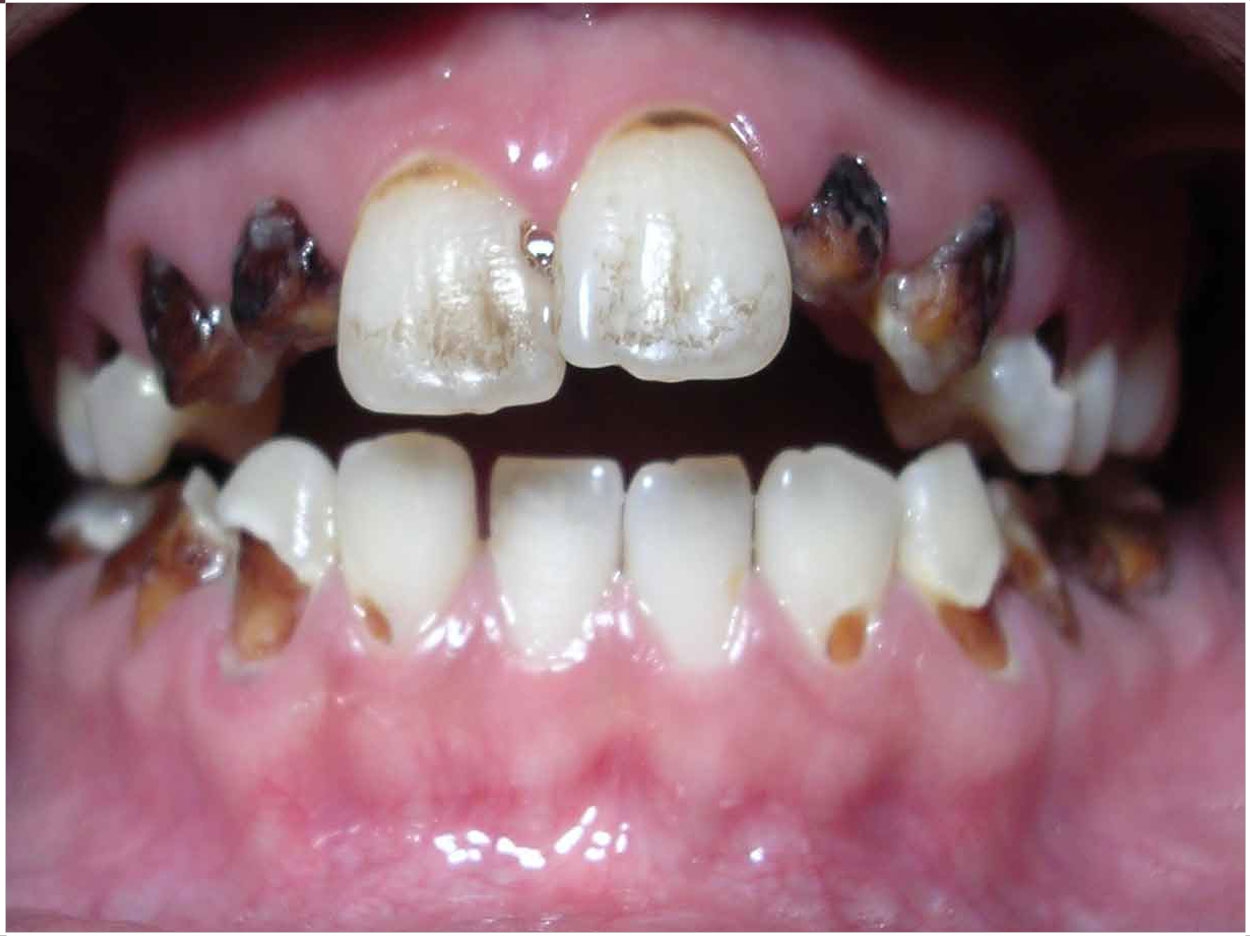
The toxic ingredients of methamphetamine can cause “meth mouth,” which is severe tooth decay marked by black, stained and rotting teeth that often need to be pulled. And with 1.3 million people in the United States using the drug at some point over the past year, according to the Drug Policy Alliance, dentists should prepare for seeing such evidence of its use among their patients.
A study by the University of California, Los Angeles, examined 571 methamphetamine users with a range of drug use behaviors and found that 96% of them had experienced cavities, with 58% showing untreated tooth decay. On all dental outcome measures, they evidenced high dental and periodontal disease.
About 31% of the subjects were missing 6 or more teeth, compared to 8.5% of adults in the general US population with 6 or more missing teeth. Only 23% of the subjects had all of their natural teeth, compared to 48% among the general population. Nearly 3% were edentulous, and 40% indicated embarrassment with their dental appearance.
Subjects who were 30 years old and older, women, and cigarette smokers were disproportionally affected by dental and periodontal disease. In fact, women had higher rates of tooth loss and caries in addition to a greater prevalence of anterior caries. Smokers were more likely to manifest 5 or more anterior surfaces with untreated caries and 3 or more teeth with root caries.
The researchers performed comprehensive oral examinations and psychosocial assessments on the subjects. Three calibrated dentists characterized dental and periodontal disease via National Health and Nutrition Examination Survey protocols. Data on substance use history and other attributes linked to dental disease was collected as well.
The distinctive patterns of dental and periodontal disease among users could alert dentists to hidden drug use, according to the researchers. Also, they say, users’ concerns about their appearance could be used to initiate brief behavioral interventions and referrals in dental settings.
The study, “Dental Disease Patterns in Methamphetamine Users,” was funded by the National Institute on Drug Abuse. It was published by JADA.
Related Articles
Aesthetic Reconstruction of “Meth Mouth”
Dentists Could Play Larger Role in Fighting Drug Addiction
Rx Painkillers Still a Significant Source of Addiction


